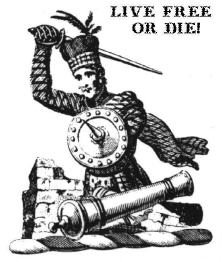Rintrah believes:"obviously marriage is tool of the matriarchy to secure obedience from husbands. That's obvious, isn't it? Why do you think women make the most fuss over weddings?" He didn't believe me when Y said:"Most often it is the mother and older women of a group who are charged with training girls for and submitting them to these procedures. Girls and women are valued primarily as vessels for the production and suckling of men's progeny..."The Origin, Nature and Sanctity of Marriage :
"
So God created man in his own image, in the image of God created he him; male and female created he them." Our Lord, in His answer to the Pharisees concerning divorce, refers to this passage in Genesis and confirms its special application to marriage. "Have ye not read," He said, ‘that he which made them at the beginning made them male and female? and said, For this cause shall a man leave father and mother, and shall cleave to his wife; and they twain shall be one flesh? Wherefore they are no more twain, but one flesh. What therefore God hath joined together, let not man put asunder."'Points to note:- Actually, man created god in man's image.
- Men are unable to create human beings.
- Given the biology of the embryo, we do not know if male and female have always existed on Earth.
- God (man- see point 1) created marriage.
Hindu Social Practices
"Dowry (Dahej/Hunda) as we all know is paid in cash or kind by the bride's family to the groom' s family alongwith the giving away of the bride (Kanya-dana). The ritual of Kanya-dana is an essential aspect in Hindu marital rites: Kanya = daughter, dana = gift. A reason for the origin of dowry could perhaps be that the groom and his family had to take up the 'onerous' responsibility of supporting the bride for the rest of her life. "
The above does not sound like something women came up with, to me. Neither does this:
"Prehistoric - Marriage basically turns strangers into relatives, decreasing tribal tensions.
3,000 B.C. - Marriage first becomes the way the upper classes conclude business deals and peace treaties, cementing socio-political alliances. Ancient societies experiment with polygamy - and in the case of Egyptian royalty, incest among siblings - to forge strong bonds of civilization.
500 B.C. - Short-lived experiment in democracy in ancient Greece actually worsens the status of women. Love is honored - but among men only. In marriage, inheritance is more important than emotional bonds: A woman whose father dies without male heirs can be forced to marry her nearest male relative, even if she has to divorce her husband first.
Circa A.D. 550 - Emperor Justinian tries to enact a requirement for a wedding license, but the unpopular measure is revoked. (He, meanwhile, managed to get a law passed that allowed him to marry a "penitent" former actress, Theodora ).
A.D. 800 - Holy Roman Emperor Charlemagne outlaws polygamy. Germanic warlords, even baptized Christians, still acquire wives for strategic reasons.900 - The Roman Catholic Church tries to require people to obtain the church's blessing of sexual unions, but is reluctant to thereby create millions of "illegitimate" children whose parents don't obey the edict. The church, however, wins a battle by denying royalty the right to divorce on a whim.
1000 - Catholic clergy are no longer allowed to marry. Upper-class marriages are often arranged before the couple has met. Aristocrats believe love is incompatible with marriage and can flourish only in adultery.
1200 - Common folk in Europe now need a marriage license to wed. Ordinary people can't choose whom to marry, either. The lord of one manor decrees in 1344 that all his unmarried tenants - including the widowed - must marry spouses of his choosing. Elsewhere, peasants wishing to pick a partner must pay a fee.
1500-1600 - Protestant moralists elevate the status of marriage over the Catholic gold standard of celibacy, but enact even stricter controls over annulments.1769 - The American colonies, basing their regulations on English common law, decree: "The very being and legal existence of the woman is suspended during the marriage, or at least is incorporated into that of her husband under whose wing and protection she performs everything."
1800 - Marriage for love, not for property or prestige, is gaining wider acceptance. But women are still completely subjected to male authority.1874 - The South Carolina Supreme Court rules that men no longer may beat their wives.1891 - England's Parliament passes a law that men cannot imprison their wives (or deny them freedom of movement from the home).
1900 - By now, every state in America has passed legislation modeled after New York's Married Women's Property Act of 1848, granting married women some control over their property and earnings.1920s - The Roaring Twenties bring about the biggest sexual revolution in marriage to-date and divorce rates triple. The Supreme Court upholds people's right to marry someone of a different religion.
1965 - In Griswold v. Connecticut, the U.S. Supreme Court overturns one of the last state laws prohibiting the prescription or use of contraceptives by married couples. Seven years later, the right to use contraceptives is extended to unmarried people.
1967 - Interracial marriage is decriminalized in all states when the U.S. Supreme Court strikes down Virginia's anti-miscegenation statutes.1968 - The Supreme Court upholds the rights of children of unmarried parents.
1969 - California adopts the nation's first "no-fault" divorce law, allowing divorce by mutual consent.
1970s - Most states overturn rules designating a husband "head and master" with unilateral control of property owned jointly with his wife."
Source: Stephanie Coontz, "Marriage, A History: From Obedience to Intimacy, or How Love Conquered Marriage"; National Women's History Project.
Found At: azcentral - and Y would be surprised if the book cited above does not have lots and lots of trusted reliable sources.


 detail of hears why
detail of hears why detail of photo below ( from art business )
detail of photo below ( from art business )
 sculpture by Maxx Sizeler that we didn't see at changing landscapes even though wearing foot deformers will change one's experience of every landscape.
sculpture by Maxx Sizeler that we didn't see at changing landscapes even though wearing foot deformers will change one's experience of every landscape.

